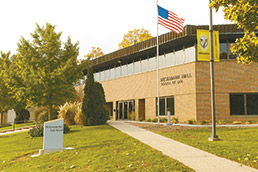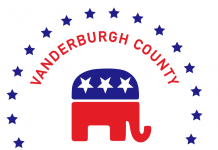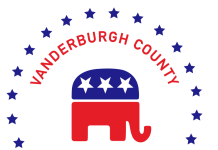On the one hand, the rankings provide some good consumer information to students thinking about getting a legal education.  But on the other hand, Newton said, the rankings have too much influence on the choices made by students, hiring practices of law firms and even the behavior of law schools in general.
Since the different groups do pay attention and blogs spotlight even the slightest movements on the list, law school deans cannot ignore the rankings no matter how much they may disparage them. Commonly, deans complain the comparison by U.S. News focuses on things that have little impact on the quality of education and do not measure the elements that schools value.
Austen Parrish, still in his first semester as dean of Indiana University Maurer School of Law, holds a tempered view of the survey. They are what they are, he said, and smart deans do not run their law schools based on the U.S. News evaluation.
Still, Parrish acknowledges deans are not immune to the excitement or disappointment caused by a high or low ranking.
“I think as much as deans rail against it,†he said, “if they move up in the ranking, they celebrate pretty               hard.â€
 Valparaiso University Law School has always been listed in the “rank not published†section of the U.S. News & World Report rankings because the rank falls below its cutoff. (Photo submitted)
Valparaiso University Law School has always been listed in the “rank not published†section of the U.S. News & World Report rankings because the rank falls below its cutoff. (Photo submitted)For the 2015 U.S. News Law School Rankings, Notre Dame placed at No. 26 and Indiana University Maurer School of Law shared the No. 29 slot with the University of Georgia. Indiana University Robert H. McKinney School of Law tied for No. 87 with six other schools including Michigan State University and the University of Louisville.
Valparaiso University Law School retained its listing as “rank not published†because its placement fell below the cutoff line. The Indiana Tech Law School was not part of the rankings because it has not been accredited by the American  Bar Association.
How it works
Each year the news magazine issues its best graduate schools lists, ranking law schools, medical schools, engineering schools, business schools, and undergraduate programs, among others. For law schools, the annual list has a great impact because U.S. News is about the only organization that reviews the accredited law schools in the country. The legal blog, Above the Law, created its own Top 50 law schools list last year based on different criteria, mostly employment outcomes.
According to U.S. News, the methodology behind its rankings measures 12 separate elements and then applies a weighted average so all the elements do not have an equal impact on the overall score. The 12 factors include assessments by law school deans as well as lawyers and judges, median LSAT score and median undergraduate GPA of the incoming class, expenditure per student, and bar passage rates, along with employment rate for graduates nine months after completing law school.
Bob Morse, director of data research for U.S. News & World Report, explained the rankings include budget, job placement and prestige because the focus is from a student perspective. The survey does not measure faculty achievement or scholarly activity but instead concentrates on the factors that students can understand and use.
“Our intent isn’t to be a powerful force with the rankings,†Morse said. “U.S. News did not start doing the rankings with the goal of becoming an influential force in law school policy.â€
However, Morse pointed out that of all the academic disciplines ranked by the magazine whether medicine, library science or any of the others, the strongest reaction to the listing comes from the law schools. One reason is because the other schools are critiqued by a couple of different organizations, but among law schools, U.S. News holds almost a monopoly on the survey.
At Notre Dame’s Mendoza College of Business, Dean Roger Huang agreed the rankings from U.S. News do not hold as much sway with business schools.
Yet, he said if his college would drop in the rankings, he would reassure the alumni that the decline was not the result of something the college did or did not do. In addition, Huang would emphasize the institution was sticking to its mission of educating the hearts and minds of the students to be ethical and use business in the proper way.
“We do not run our program to conform to the rankings,†Huang said.
Newton, Parrish and Andrew Klein, dean of the Indiana University Robert H. McKinney School of Law, echoed Huang. In addition, they all maintained the U.S. News survey does not give a complete picture of their schools, and they questioned the magazine’s methodology.   As an example, Klein pointed out that a small two-point move in a school’s median LSAT can cause a dramatic swing in the rankings but have zero impact on the quality of education.
Parrish attributed IU Maurer’s slip in the rankings to a drop in the school’s job placement. The Bloomington law school declined four places in the 2015 listing to No. 29 because, he explained, personnel problems in the school’s placement office lowered the employment rate for students in the class of 2012. Since then, the law school has hired a new assistant dean of career and professional development, and the employment rate for the class of 2013 is 11 percent higher than for 2012.
“A one-year blip isn’t any concern to me at all,†Parrish said.
At Notre Dame, Newton has counseled students who enroll in programs solely based on the rankings. She has seen students forgo scholarships from law schools located in the area of the country they want to practice and instead pay full tuition and go someplace they don’t intend to stay just to attend an institution that is one or two slots higher in the rankings.
Despite her concerns about the influence the rankings have and the lack of transparency behind the calculations, Newton has never contacted U.S. News to discuss the situation. The rankings are a website, she said, that does not draw on the expertise of journalists, statisticians or social scientists.
“I don’t respect them enough to engage with them,†she said. “I don’t think they are going to listen to me.â€
Morse said U.S. News does not tailor the rankings in response to law schools’ complaints and criticisms. Consequently, the rankings have credibility, he said, because the magazine is an independent judge.
He then noted what he called the hypocrisy of the law schools. For all the griping law schools do, 66 percent of the deans respond when U.S. News requests information.
Law schools do have the option of not providing data and assessments to the news magazine, but Newton compared that option to the prisoner’s dilemma. Unless all the schools refuse to participate, those that do not return the forms will be punished with a lower ranking.
As such, Newton said she would not stop participating because she does not want Notre Dame to fall in the rankings. She does not want to hurt the students and alumni by having the school’s reputation downgraded.
Former IU McKinney dean Gary Roberts did not respond to U.S. News data requests for several years. When Klein became dean, the law school resumed submitting the data.
In fact, when Klein was interviewed for the dean position, he was asked about the rankings. He replied although the school was forced to pay attention to them, he would be ethical in reporting the data and not fudge it. He also asserted he would not make any changes that he thinks would diminish the program for the students just to do better in the rankings.
Klein agrees with Roberts that the rankings do not present an accurate portrayal of the quality of education offered at IUÂ McKinney, but there is the need to be pragmatic because people pay attention.
“There are many flaws in the rankings,†Klein said. “I don’t think that U.S. News does a very good job of measuring the quality of an institution’s education. But, unfortunately, some people pay attention to the rankings. We were doing a disservice to our law school by not participating.â€â€¢





#29 Indiana University—​Bloomington (Maurer)
Bloomington, IN
$30,526 per year (in-state, full-time); $48,962 per year (out-of-state, full-time) 638
* * * * * * * * * * * * * * * * * * * * * * * * * * * *
#29 University of Georgia
Athens, GA
$18,740 per year (in-state, full-time); $36,410 per year (out-of-state, full-time 621
Ah, I get it now why she is grumpy about the rankings; “…factors that students can understand and use.“. Just shows you where their heads are and it isn’t on the school or students.
Comments are closed.